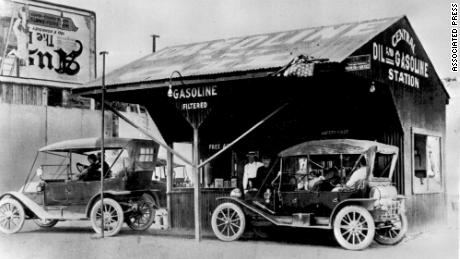In fact, oil giants’ gas station ads in the early and mid-20th century assured travelers that their bathrooms were as clean as those in drivers’ own homes.
Companies tried to make their bathrooms feel more like home in response to the growing number of women who were driving and traveling around the country. By 1928, women bought half of gas stations’ fuel that year, according to an industry journal.
“She will remember the dirty rest room and avoid the station on her next trip,” read a 1938 article in trade journal National Petroleum News with the headline “Women Shun Dirty Stations.”
Appealing to women
At the turn of the 20th century, automobile drivers would pull into a blacksmith shop, a hardware store or a pharmacy to purchase a tin can of gasoline.
By 1920, there were 15,000 filling stations in the United States. Many of these stations, however, were in shabby condition and their designs and services were an afterthought.
As competition for customers grew in the 1920s and 1930s, companies found they needed ways to separate their stations beyond the indistinguishable gasoline brand they sold. They began focusing on service and amenities.
Click Here to Read the Full Original Article at CNN.com – RSS Channel – HP Hero…

